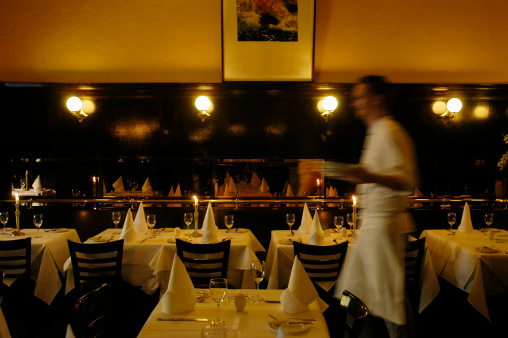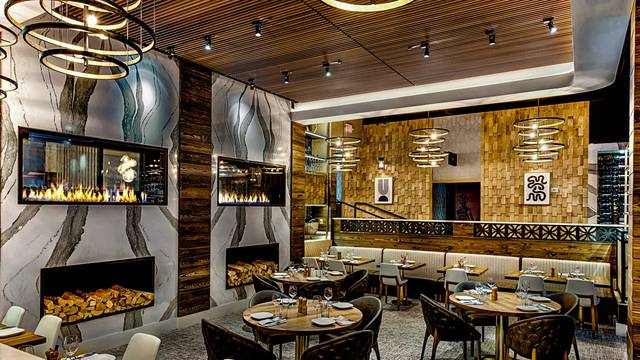Asian Fusion Restaurant: A Special Dining Experience in the Heart of Islamabad
Asian Fusion Restaurant: A Special Dining Experience in the Heart of Islamabad
Blog Article
Savor Genuine Oriental Food With a Pan-Asian Twist for a Cooking Journey
Getting started on a culinary journey through genuine Eastern food, enhanced with a Pan-Asian twist, uses an one-of-a-kind chance to discover the abundant tapestry of tastes that define the area's varied culinary practices. This experience invites you to relish the exquisite equilibrium of preferences-- sweet, salty, spicy, and sour-- balanced by fragrant herbs and seasonings. Envision the ingenious blend of Thai curry and ramen or the unexpected delight of sushi burritos. As you ponder these luring dishes, take into consideration the social stories and historic influences that shape them, each bite using a story waiting to be discovered.

Checking Out Pan-Asian Tastes
In the world of global gastronomy, Pan-Asian food attracts attention for its amazing variety and the unified interplay of flavors from various Asian cultures. This culinary method celebrates the abundant practices and one-of-a-kind components located across the continent, producing a tapestry of tastes that is both fascinating and gratifying. Secret to Pan-Asian cuisine is its capability to balance different tastes-- sweet, salted, spicy, and sour-- while highlighting the quality and high quality of each active ingredient.
From the umami-rich soy sauce of Japan to the fiery chili peppers of Thailand, Pan-Asian food provides a considerable palette of flavors. These aspects are typically integrated in inventive means, improving meals with layers of intricacy. For instance, using fragrant herbs such as lemongrass and cilantro, common in Vietnamese and Thai food, includes a revitalizing brightness to recipes, while the unification of coconut milk supplies a luscious, rich appearance.
The focus on fresh produce and fragrant seasonings guarantees that each meal is not only a banquet for the preference buds yet likewise for the senses. Pan-Asian cuisine invites restaurants to embark on a cooking trip, exploring the huge and differed landscapes of Oriental gastronomy with every bite.
Combination Meals to Attempt
While Pan-Asian food is celebrated for its standard tastes, the modern-day cooking landscape is increasingly welcoming blend recipes that mix these traditional elements with impacts from other areas. This ingenious approach not just honors the abundant heritage of Asian cookeries however likewise introduces novel taste experiences that interest modern tastes buds.
A prime example of such a combination meal is the Korean-Mexican taco, where marinated bulgogi beef is covered in a warm tortilla, covered with kimchi and a hot gochujang-infused salsa. This combination weds the vibrant, savory tastes of Korea with the vivid, fresh components of Mexican cuisine. Likewise, sushi burritos have actually gotten popularity, joining together the delicate virtuosity of Japanese sushi with the passionate, hand-held benefit of a burrito, usually including fusion ingredients like tempura shrimp and avocado with a drizzle of wasabi mayo.
One more notable recipe is Thai curry ramen, which instills the creamy, fragrant flavors of Thai curry right into the reassuring broth of standard Japanese ramen, developing an unified mix that entices the senses. These fusion meals extend past simple uniqueness; they represent a cooking dialogue between cultures, urging expedition and innovation worldwide of Pan-Asian food.
Vital Active Ingredients and Seasonings
To truly value Pan-Asian food, one must understand the essential ingredients and seasonings that develop its structure. This diverse cooking design draws from an abundant tapestry of Oriental practices, employing a harmonious mix of appearances and flavors.
Fragrant elements are critical, with ginger, garlic, and lemongrass being ubiquitous throughout various Pan-Asian dishes. These components supply an aromatic base that improves the intricacy of tastes. Spices such as star anise, cardamom, and cinnamon present warmth and character, echoing influences from areas like China and India.

Food Preparation Methods and Tips
Grasping the art of Pan-Asian cuisine requires familiarity with its unique food preparation strategies, each adding to the dynamic tapestry of flavors this culinary practice is celebrated for. Central to these approaches is the stir-fry, a fast food preparation strategy that protects the dietary stability and brilliant shades of active ingredients. Making use of a wok, the stir-fry technique enables even heat distribution, vital for attaining the characteristic structure and flavor balance of Pan-Asian recipes.
An additional essential technique is steaming, particularly her comment is here widespread in Chinese cuisine. This mild approach keeps the all-natural tastes and nutrients of ingredients, making it perfect for seafood and veggies. Dumplings, a beloved staple, usually gain from steaming, resulting in soft, delicious textures.
Cooking, additionally integral, gives smoky depths to dishes such as Korean bulgogi or Japanese yakitori (pan asian restaurant Islamabad). This method usually involves seasoning ingredients, enabling flavors to permeate deeply prior to cooking over an open flame or warmer
Lastly, his comment is here understanding the art of balancing tastes-- sweet, sour, salty, bitter, and umami-- is vital. Properly layering these elements can elevate a meal from ordinary to remarkable, supplying a complex and satisfying culinary experience that personifies the essence of Pan-Asian food.
Eating Experiences Worldwide
Around the world, Pan-Asian food provides an exceptional eating experience, commemorated for its abundant tapestry of tastes and lively presentations. This culinary phenomenon has actually transcended social limits, recording the hearts and tastes buds of food fanatics worldwide. In cosmopolitan cities fresh York, London, and Sydney, Pan-Asian restaurants offer as melting pots where culinary customs from Thailand, Japan, China, and past assemble, supplying diners with an eclectic mix of meals that highlight the region's variety.
The international charm of Pan-Asian cuisine depends on its capacity to provide both credibility and technology. Chefs skillfully wed conventional components such as lemongrass, soy sauce, and miso with modern methods, resulting in meals that are both refreshingly brand-new and familiar. This fusion allows diners to begin on a cooking trip that appreciates heritage while welcoming modernity.
Additionally, dining experiences are elevated with thoughtfully designed settings that mirror the ethos of Pan-Asian aesthetic appeals. From minimal Japanese-inspired interiors to dynamic Thai-themed areas, each restaurant offers a special atmosphere that complements the cooking offerings. Because of this, customers are not simply taking in a dish however partaking in a social experience, making Pan-Asian dining a really global phenomenon.
Conclusion
The expedition of Pan-Asian food uses a profound understanding of the elaborate interaction of tastes and cooking customs throughout Asia. By welcoming combination recipes such as Thai curry ramen and sushi burritos, the culinary trip not only highlights the versatility of traditional active ingredients however likewise showcases cutting-edge modern strategies. This gastronomic experience, enriched by cooking approaches and important seasonings, provides a tex mex near me distinct possibility to appreciate the multiculturalism and cooking virtuosity that define Pan-Asian cuisine on a global range.
Getting started on a cooking journey via authentic Eastern food, improved with a Pan-Asian twist, uses a distinct possibility to check out the abundant tapestry of flavors that define the region's varied culinary practices.In the world of global gastronomy, Pan-Asian cuisine stands out for its impressive variety and the unified interaction of tastes from numerous Asian cultures. Key to Pan-Asian food is its capability to balance different flavors-- sweet, salty, spicy, and sour-- while highlighting the freshness and quality of each active ingredient.

Report this page